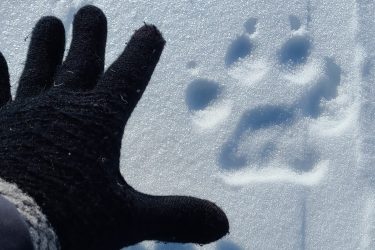As climate change warms the planet, weather patterns are likely to shift. Even the consistency of snow — how fluffy it is, for example — could change.

Laura Prugh, a wildlife ecologist and University of Washington associate professor in the School of Environmental & Forest Sciences, wants to know how these changing conditions will affect how predators hunt prey.
“When you wear snowshoes in deep snow, you stay on top of the snow. But if you take the snowshoes off, you might go in up to your waist. Certain species, such as wolves and lynx, have adapted to deep snow conditions because their feet act like snowshoes,” Prugh said. “But their prey, such as caribou and moose, are heavier and have hooves instead of paws, so they sink in more. As climate change is making things warmer and changing the amount of precipitation, it’s going to affect how deep and hard the snow is. And that’s going to affect how deep the animals are sinking into the snow. Few scientists have looked at this before.”
To answer this question, Prugh needed a snow expert. She teamed up with Jessica Lundquist, a UW professor of civil and environmental engineering. Together with a group of researchers, the two measured snow properties that led to a “danger zone,” where prey would sink but predators would not. In a recent paper, the team defined danger zones for 10 predator-prey pairs in both Washington’s Methow Valley and Denali National Park in Alaska.
Read more at UW News »
